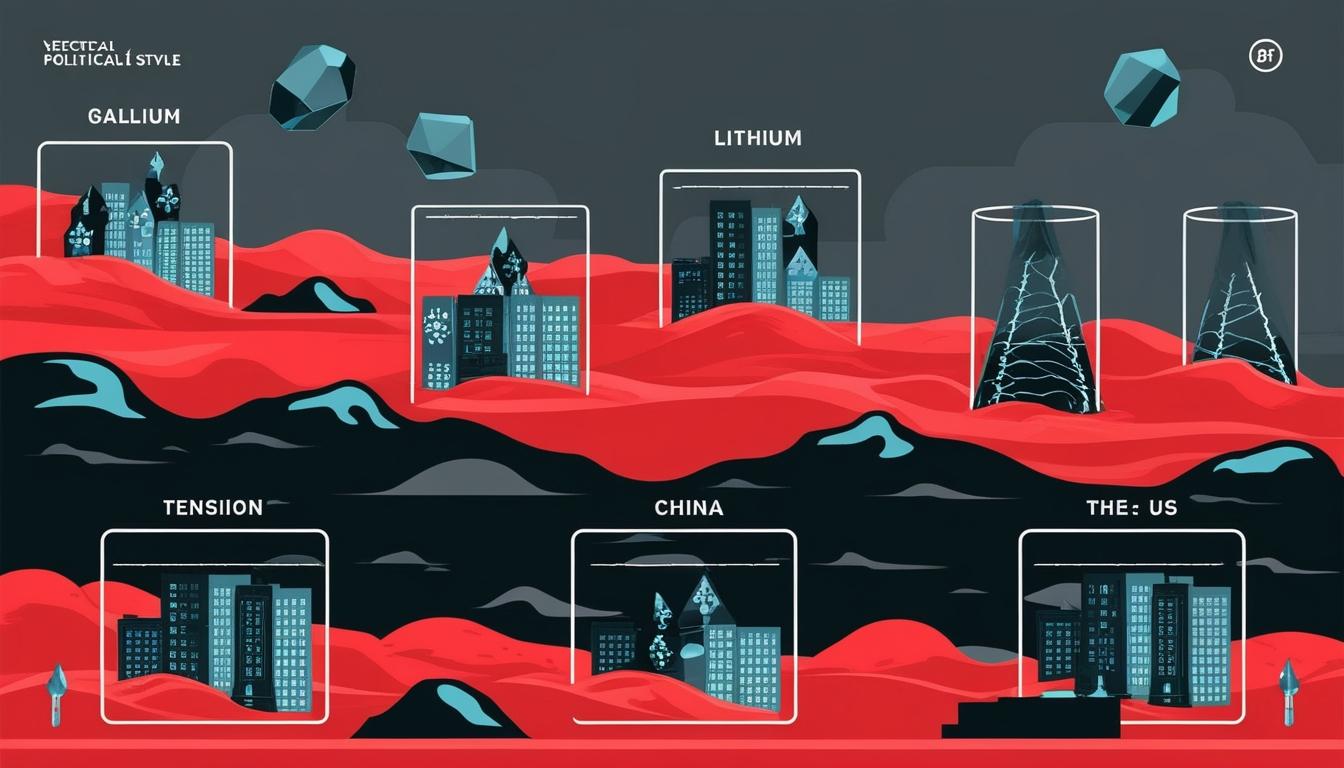In 2024, the global landscape for critical minerals has been significantly transformed by new trade barriers and protectionist policies instigated by major economies such as China and the United States. This shift has necessitated a considerable reorganisation of supply chains for strategic materials, particularly as geopolitical tensions continue to escalate.
A pivotal moment occurred in September 2024 when the United States imposed a 25% tariff on imports of critical minerals from China. This marked a substantial change in policy, heightening the already strained trading relationship between the world's two largest economies. December saw China respond by tightening export controls on vital elements such as gallium and germanium, actions that were seen as directly targeting American consumers.
Looking ahead to 2025, the situation appears poised for further volatility. At the year's outset, China hinted at imposing additional export restrictions on lithium-ion battery materials and lithium production technologies, which has injected uncertainty into plans by Chinese battery manufacturers to set up joint ventures for electric vehicle (EV) production overseas.
The political landscape will also play a crucial role in shaping market dynamics. The possible return of Donald Trump to the White House has raised concerns among market participants about the imposition of broader tariffs affecting not only Chinese imports but also products from traditional US allies. By late November 2024, Trump had suggested plans to institute a 25% tariff on imports from Mexico and Canada, along with a further 10% on goods sourced from China.
In the arena of indium, a critical material used in LCD screens and semiconductor chips, the US enacted Section 301 tariffs on imports from China. These developments created a tumultuous pricing environment, with indium prices initially surging due to speculative trading before stabilising as US buyers shifted away from reliance on Chinese supplies. One North American market participant noted, "Electronics demand remains strong and is boosted by AI, but geopolitical concerns outweigh that."
The chromium market saw comparable impacts, with the US tariff on Chinese chromium causing significant shifts in supply chains and notable price disparities across regions. Fastmarkets assessed that while US prices for chrome metal began commanding premiums of up to 40% over European prices due to the tariff, this exacerbated the reliance on imports as European suppliers redirected material to the more lucrative US market. A European trader expressed concerns about domestic production, stating, "The US will take all the European material, so there will be no [domestic production] left for EU industry."
The tantalite market also faced challenges, with the US imposing new tariffs on imports from China to encourage domestic sourcing. Tantalite is integral for the electronics, aerospace, and defence sectors, serving key purposes in manufacturing electronic capacitors and superalloys. Despite efforts to increase supply chain independence, the US remains heavily reliant on imports, especially from politically sensitive regions.
The aforementioned dynamics extend into the world of rare earth elements, where new tariffs are set to come into effect in 2026. Following the Biden administration's draft policies, the inclusion of permanent magnets in US tariffs marked a marked departure from earlier approaches. Companies like E-Vac and MP Materials are anticipating increased production capabilities domestically, with significant investments made towards rare earth magnet manufacturing.
Additionally, gallium and germanium have been focal points of contention, already subjected to strict export controls from China. As the situation evolves under the prospect of a second Trump presidency, market participants remain cautious, particularly concerning China’s established dominance in these markets.
As various sectors brace for ongoing supply chain challenges and fluctuating trade policies, the interplay of politics, tariffs, and market demands will undoubtedly shape the strategic landscape for critical minerals in 2025 and beyond. The full impact of these adjustments remains to be seen as the global economy adapts to a rapidly evolving trade environment.
Source: Noah Wire Services
